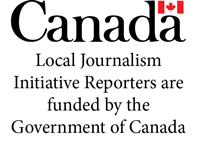To the editor,
Of the 40 studies having been conducted or to be completed on the viability and benefits of the deep geological repository (DGR) to South Bruce, one is notable by its absence: can the nuclear industry and its regulator – the Canadian Nuclear Safety Commission (CNSC) – be trusted to establish and maintain the highest possible safety standards for this first-ever deep level storage facility for all of Canada’s high-level nuclear waste?
A special report by the Globe and Mail (“Nuclear reactor pressure tubes are deteriorating faster than expected. Critics warn regulators are ‘breaking their own rules’” – Jan. 5, 2023) raises this question, as it investigated degradation of faulty pressure tubes in some of the nuclear reactors at Bruce Power – and more importantly, how the CNSC has allowed utilities to operate tubes beyond the licensing limits, a crucial concession for the aging reactors.
The tubes contain the nuclear fuel bundles and heavy water for cooling operation. They are the heart of the CANDU nuclear reactor operation. Issues with these tubes can lead to serious implications. The CNSC has safety requirements that a licensed operator must meet to continue the safe operation of the reactor.
During the 2022 refurbishment process at Bruce Power, the company found that the tubes had deteriorated much faster than had been expected. The CNSC knew that risk of the tubes breaking had increased with age, as a memo found in a freedom of information request stated, “But the rate of increase was not expected to be this much.” In fact, the hydrogen levels, at the tube’s outlet end were nearly two times higher than expected and beyond the CNSC imposed levels.
And while Bruce Power had been violating the terms of its operating licenses unknowingly – the concern was that Canada’s entire fleet of CANDU reactors were also aging and therefore also at risk of the same violation.
As a layman, a taxpayer, and a consumer of nuclear power – one would expect that to mean that the CNSC would demand that the tubes be replaced. Being the industry’s regulator, Bruce Power and the operators of all aging CANDU reactors would be forced to comply.
No. Instead the CNSC fixed the tube problem by a work around. According to the Globe and Mail, Blair Carroll – “a specialist in the CNSC’s operational engineering assessment division” – was concerned that the inspection of all tubes in all the reactors at Darlington and Pickering would “involve a very significant effort.” He recommended a work-around that might be the best approach to solving the problem. His comment was, “I don’t think there is anything in the [licence] that would be violated with a shift to demonstrating that cracking is not a concern.”
This is an argument I might expect from the nuclear industry, but not the regulator in charge of setting safety standards – and ensuring they are met. Yet, it is the regulator providing this advice to the industry – the reason is not about safety, but costs.
And this is not the only time. At an international conference this summer, a question was raised whether Canada would be changing the regulated safety limit for radiation dose on our eyes (the International Commission on Radiological Protection had recommended reducing the upper dose from 150 millisievert to 20), the CNSC answered with this “stakeholders expressed significant concerns about the costs of implementing and managing exposures to the lens of the eye below the average dose of 20 mSv per year.”
By “stakeholders” the CNSC really means the nuclear industry, and I assume that doesn’t include the power workers who would most immediately benefit from the increased safety standards.
As summarized in the Globe investigation, “The episode demonstrates that regulatory limits for Canada’s nuclear industry can be remarkably elastic when it comes to facilitating the continued operation of Canada’s aging reactor fleet.” I’d also add once the nuclear industry and its regulator set a safety standard, the cost of meeting it (or raising it) trumps the standard itself.
As residents of South Bruce decide whether to host the industry’s DGR, we should be concerned that once the facility is built, safety standards set, and nuclear waste delivered and buried, that both the industry and its regulator cannot be trusted to keep their promises to the community.
Nuclear power plants will eventually shut down, but the DGR project is a forever event. The safety standards required for a DGR must therefore be much higher than power plants, but what is the use of any standard (an industry term for “promise”) if the industry and its overseers collaborate to break them.
Since there is no DGR operating anywhere in the world, there is no experience to judge how effective any standards will be in managing the risks and the safety of the project. The industry is relying on computer generated models and assumptions which may not stand the test of time. We already know that they underestimated the lifespan of fuel cell tubes in a span of less than 60 years. How can we be sure that their safety predictions for the DGR implementation, which must last for tens of thousands of years, will prove to be adequate or accurate?
Advocates for the DGR need to prove that the industry and the regulator can be trusted. Ignoring their own science is not a good start.
Bill Noll
Stittsville, ON



